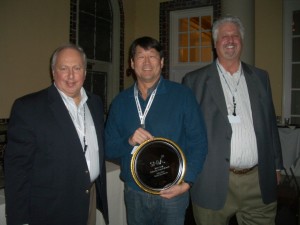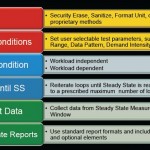Passionate and dedicated volunteers are vital to the success of SNIA and its programs. Congratulations to the following SNIA Solid State Storage honorees, selected by the entire SNIA member community, who were recognized for their 2011 contributions!
Volunteer of the Year recognizes an individual who, above all others in 2011, consistently stepped up and helped SNIA achieve something new and groundbreaking or who significantly advanced an existing program. Congratulations to Paul Wassenberg of Marvell, SNIA Solid State Storage Initiative Chair, winner of the 2011 SNIA Volunteer of the Year for his leadership in Solid State Storage education and outreach of SSSI activities including the Enterprise and Client Performance Test Specifications and Understanding SSD Performance Project .
The Industry Impact Honoree recognizes an individual who has significantly advanced a cause for SNIA leading to an impact on the industry or the Association. Congratulations to Eden Kim of Calypso Systems, SNIA Solid State Storage Technical Work Group, winner of the 2011 Industry Impact Award for his leadership on development of the Solid State Storage Enterprise and Client Performance Test Specifications.
The Most Significant Impact by a Technical Work Group recognizes the SNIA TWG, which above all others in 2011, had members and efforts which consistently stepped up and helped SNIA achieve something new and groundbreaking or which significantly advanced an existing program. Congratulations to the Solid State Storage Technical Work Group, honored in 2011 for their development of the Solid State Storage Enterprise and Client Performance Test Specifications.

